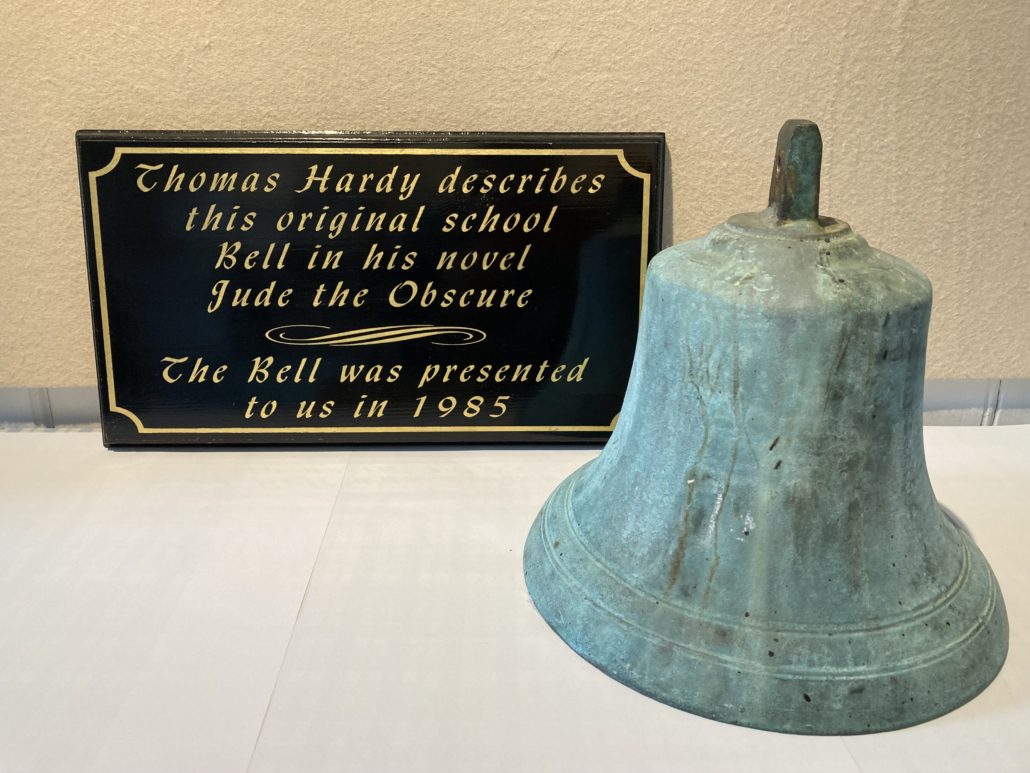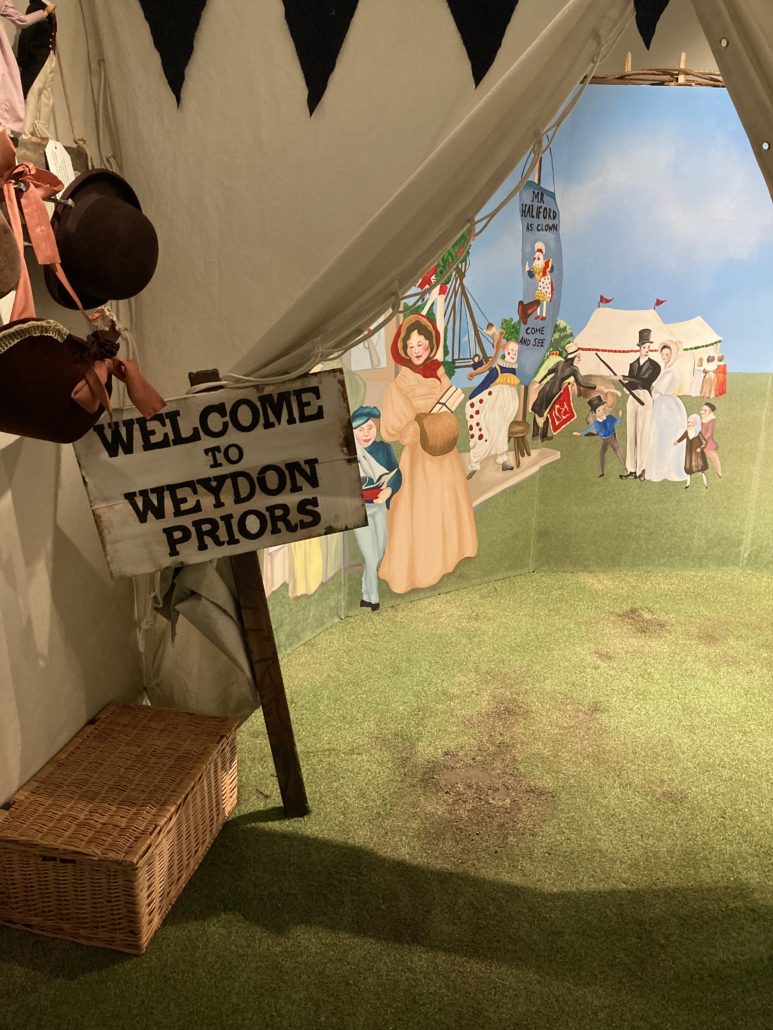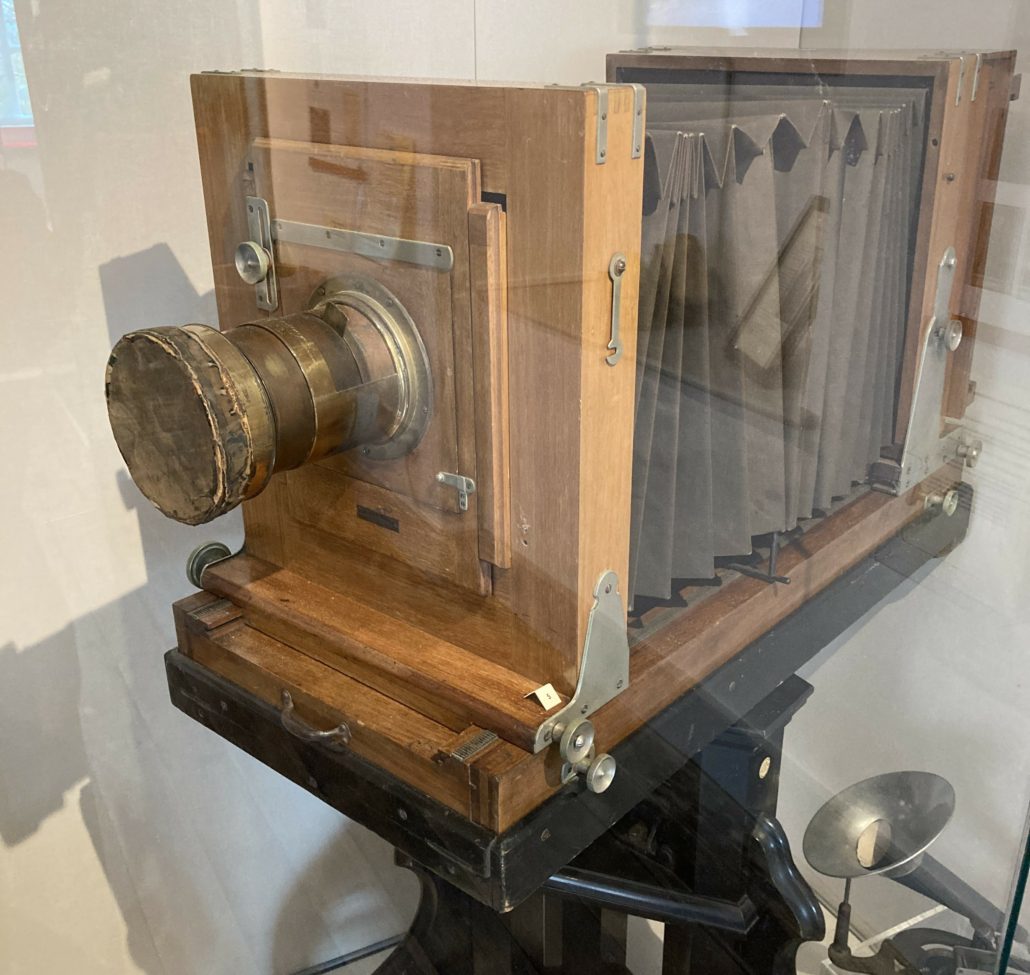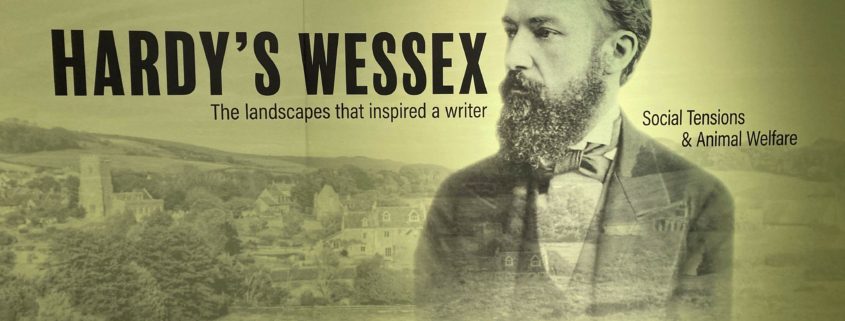Hardy’s Wessex Landscapes – From Casterbridge to Shaston
The largest ever multi-venue show of objects from the life and times of Thomas Hardy opened on 28 May and runs until 30 October 2022. Apart from four distinct exhibitions at the Wessex Partnership Museums in Dorchester, Poole, Salisbury and Devizes, there are satellite displays in nine community museums and visitor centres, including Gold Hill.
Curator Harriet Still selects as her two main themes at the Dorset Museum, Social Tensions and Animal Welfare. Both of these are strongly represented in Hardy’s last, and possibly most controversial, novel Jude the Obscure (1895) which is set partly in Shaftesbury. Click here to explore Thomas Hardy’s connections with Shaftesbury (renamed Shaston) and to find a walking tour of the locations borrowed by Hardy for Jude.

Hardy was well acquainted with the realities of Dorset rural life. It was bad enough for the working class humans, afflicted by poverty, disease, and a repressive social order and moral code. Hardy creates a number of feisty individuals, often women, who try to kick over the traces, but tend to meet with tragedy. It was worse for the animals, who could not speak for themselves. Jude as a boy is paid sixpence (2.5p) a day to frighten the rooks off Farmer Troutham’s corn. He does this with a rattle like those formerly used by football fans. (And is beaten with it by the farmer.)
He sounded the clacker until his arm ached, and at length his heart grew sympathetic with the birds’ thwarted desires. They seemed, like himself, to be living in a world which did not want them. Why should he frighten them away? … They stayed and ate, inky spots on the nut-brown soil, and Jude enjoyed their appetite. A magic thread of fellow-feeling united his own life with theirs. Puny and sorry as those lives were, they much resembled his own.
Arabella and Jude have to slaughter a pig. The process is described with considerable sympathy for the pig: “The dying animal’s glazing eyes riveting themselves on Arabella with the eloquently keen reproach of a creature recognizing at last the treachery of those who had seemed his only friends.”

Unsurprisingly Hardy became a strong supporter of the RSPCA, and wrote official verses in 1924 to mark the centenary of the foundation of the SPCA. Florence Dugdale, his second wife, introduced Wessex the wire-haired fox terrier to the Hardy household at Max Gate. Hardy at first disliked the dog, but became devoted to “Wessie”, and indulged him. Wessex was notorious for biting visitors, who were often rich and famous. Lady Cynthia Asquith described Wessex as “the most despotic dog guests have ever suffered under.” J.M. Barrie said that Hardy showed him a letter from a radio company which had sent the author a complimentary wireless. They would have been mortified to know that Hardy only turned it on for the benefit of the dog, who liked music but not speech. Wessex also appeared to like T.E. Lawrence (of Arabia) and refrained from biting him when he rode over from Bovington on his motorbike.

At the Dorset Museum show you can step inside a fairground tent at Weydon Priors (Weyhill, Hants) where Michael Henchard, future Mayor of Casterbridge, drunkenly sells his wife and child to a sailor. This tableau, created by BA (Hons) Costume and Performance Design students from Arts University Bournemouth, provides Victorian hats and a tripod camera with a fisheye lens, so that you can capture your image as a Victorian fair-goer on your mobile phone. The writer has tried it and it works.

Back in Gold Hill Museum we have a splendid example of the real thing plus an impressive legacy of images of Edwardian Shaftesbury. Some of the best will feature in The S&DHS December 2022 lecture.



